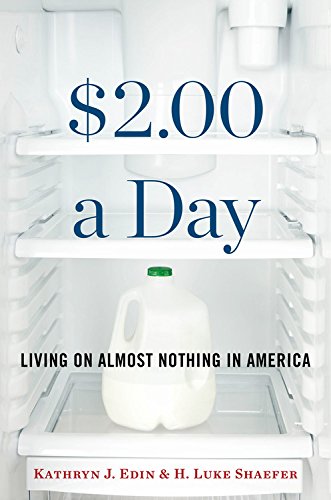
$2.00 a Day
By Kathryn J. Edin and H. Luke Shaefer
HOUGHTON MIFFLIN HARCOURT
Two dollars per person per day is a poverty threshold in the developing world that’s rarely evoked when discussing the United States. It should be, say academics Kathryn Edin and H. Luke Shaefer, whose new book documents a troubling rise in the number of Americans—including as many as 3 million kids—who survive on almost nothing. $2.00 a Day is an intimate chronicle of the “cashless economy” and also serves as an indictment of the welfare reform that began under President Clinton. Shaefer and Edin—a Johns Hopkins sociologist noted for her “home economics of welfare”—embedded with communities in Cleveland, Chicago, and the Mississippi Delta to learn how the most off-the-radar poor manage without a safety net. They found heartbreaking survival strategies—plasma sales, sugar daddies—and kids in horrible circumstances. With any luck (calling Bernie Sanders) this important book will spark election year debate over how America cares for its most vulnerable.
















